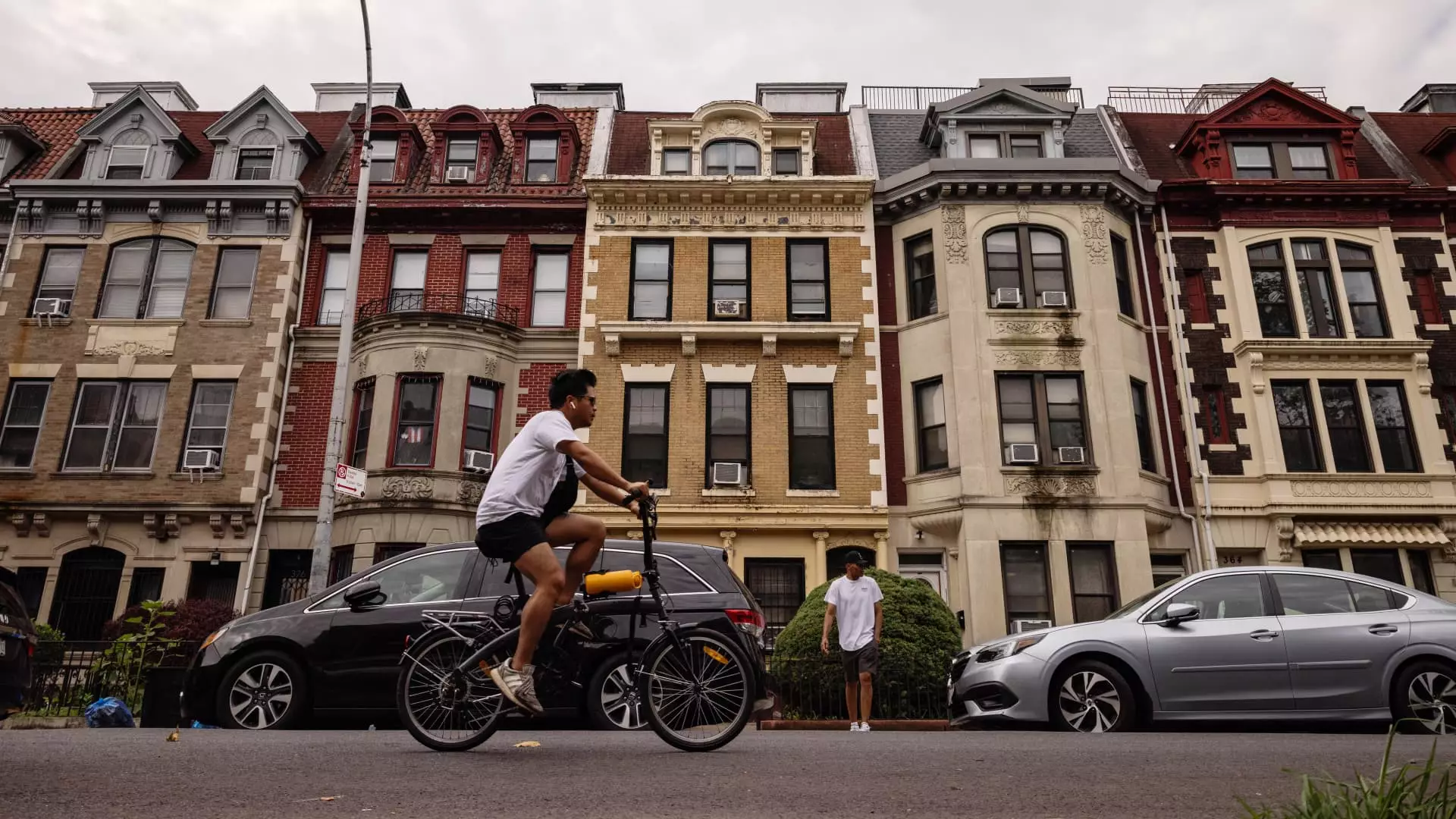In an unprecedented twist, the rental market finds itself grappling with a paradox: even as new apartment construction numbers soared to levels unseen since the Nixon administration, the struggle for renters to secure housing continues unabated. Last year marked a staggering feat for developers, who completed nearly 600,000 multifamily units—a remarkable 34% increase from 2023 alone. Conventional wisdom would suggest that such a surge in supply would ease the competitive pressure on renters. Yet, the reality is starkly different.
According to a recent report by RentCafe, the national Rental Competitiveness Index has risen, indicating that it’s actually getting more challenging to find a rental. The question arises: what drives this paradoxical scenario? One critical factor is the rise in lease renewal rates, which surged to 63.1% this year from 61.5% the previous year. It appears many renters are opting to stay put, spurred by a confluence of high mortgage rates and skyrocketing home prices. This inclination among renters to renew leases means that vacant rentals are becoming a scarce commodity, leading to intensified competition.
The Urban Magnet: Why Certain Cities Thrive
Among the cities attracting the most attention and competition, New York City, Dallas, and Austin lead the charge in new rentals. Yet it’s Miami that stands at the pinnacle of competitiveness, boasting an average of 14 applicants per apartment. This city is not just a sun-soaked paradise; it has cunningly rebranded itself as ‘Wall Street South’—a nod to the influx of financial institutions and burgeoning investment firms drawn to the area. With its lack of an income tax and strategic positioning at the convergence of the Americas, Miami has successfully lured professionals and businesses alike.
What’s more, the Midwest is proving to be a surprise contender in the rental war. With ten of the top twenty most competitive markets situated in this region, cities like suburban Chicago, Detroit, and Cincinnati are emerging as unexpected havens for renters. Amid the urban glare of coastal cities, the charm and affordability of the Midwest could soon make these areas frequently overlooked, a new focus for aspiring tenants.
Rising Rents and Future Projections
Despite some signs of easing rent prices over the past year, a shift appears to be underway. Rents nationwide saw a notable uptick of 0.3% in February, marking the end of a six-month streak of decline. This month traditionally signals the start of a bustling rental season—an annual rhythm that will likely push rents higher as the summer months invite students and seasonal workers back into the market. Alarmingly, while rents have adjusted slightly since early 2023, they remain a daunting 20% higher than in January 2021.
A glance at historical context reveals a rollercoaster ride for median rents: a stunning spike in 2021 and early 2022 was followed by a decline that saw the median fall 4.6% below its August 2022 zenith. Yet, with occupancy rates hovering close to 93.3% and competition escalating, it feels like we are on the precipice of yet another surge in rental costs. The mixed signals in this landscape reflect broader economic uncertainties, intertwining the real estate market with shifting interest rates and inflationary pressures that haunt everyday Americans.
A Shifting Landscape for Renters
The essence of the current rental market portrays a bleak image for those seeking affordable housing solutions. While increased supply theoretically should alleviate pressures, the dynamic reality reflects consumer behavior influenced by external economic variables. Renters today are often left with little choice but to renew leases under increasingly limited options.
Thus, the interplay between economic policy, urban migration patterns, and regional competitiveness paints a complex picture. As new apartments spring forth, one must question whether they genuinely meet the needs of the market, or if they serve as a mere band-aid on a growing wound. It seems the rental market persists in reminding us that supply alone does not dictate pricing, and with the current trends, potential renters may very well find themselves on an endless quest for housing stability.

